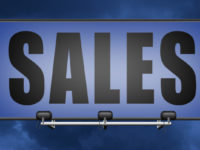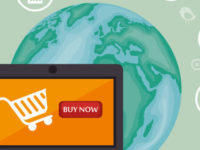SME branding specialist Kady O’Connell was recently approached by a small-business owner who approached her for help because their Meta ad results were tanking.
“They were baffled as to why they were achieving such dismal results despite their best efforts to increase ad spend and shoot professional videos for their ads to create premium content,” Kady explains. “From working with more than 100 Aussie brands, we’ve determined that there is a clear framework for success that is predominantly dependent on the chronological order in which particular actions occur.”
Kady described this approach as her ‘Iconic Brand Blueprint’, and sees it as a crucial step in helping brands have the right foundations in place before they can contemplate making any money from their ads. She adds that ads on their own are just one piece of the puzzle, and rely on ensuring three other elements are in place before they will be effective:
1. A consistent brand and tone of voice
“The client was creating compelling and professional photo and video content, which many would believe is ample to deliver results,” Kady says. “However, the brand’s colours, fonts and style were completely inconsistent.”
Kady believes that it takes seven to 20 interactions with a brand to build up awareness, favourability and trust, so if branding keeps changing, she argues, it will take more than 20 interactions for someone to trust the business enough to make a purchasing decision. “We took steps to refine the branding and brand style guidelines to ensure all posts were consistent and uniform, setting a premium tone for the brand to build credibility,” she says.
2. A landing page that will move customers automatically through a buying journey
Kady’s client was sending all of the leads generated through the ad campaign straight to its website homepage, a scenario Kady describes as “a big mistake”.
“Brands taking this approach are paying money for a lead and then sending them on a ‘choose your own adventure’,” she explains. “It’s imperative to decide the desired actions for each lead and work backwards to create a bespoke funnel.”
For this particular client, Kady and her team built a landing page for the ads that very clearly specified the client’s offer, along with supporting collateral, such as convincing and relevant case studies and testimonials.
They then embedded the client’s calendar into this page to make it seamless for a potential customer to book in a call.
This was all linked to internal CRM so that each lead would receive automated nurturing once they signed up, to take them further down the funnel. All these additional touchpoints were designed to further encourage each lead to take action.
3. Organic social content to complement paid campaigns
“Even though the client’s ads were of a high quality, [the business was] not regularly posting content on its social media account,” Kady explains. “People are naturally sceptical of ads and virtually anything they see online. They also don’t make immediate buying decisions and tend to check multiple platforms and review sites before they complete a purchase.”
With this in mind, Kady was of the opinion that when someone saw the client’s ads, they then checked them out on multiple social channels before deciding to book the call. However, when they did, they were faced with what was basically tumbleweeds.
“This is a big red flag for customers and plants a seed of doubt that the company may not be established or legitimate,” Kady warns. “We ensured that this client established an incredible social feed with valuable content before rolling out the new campaigns.”
Ready for growth – paid ads
With the three above foundations in place, Kady’s team turned its attention to the ads themselves, and evaluated the ways in which they could be optimised. The key adjustments that resulted from this process were:
1. Improving the hooks on videos
“The first five seconds of an ad are the most important and studies show that 40 per cent of users drop off a video after this time,” Kady avers. “The client was using a company logo intro slide on their videos, which was a bad use of this critical time. We shifted this to open the videos with a strong and punchy hook to capture attention more quickly.”
2. Testing the creatives
This client had previously focused all its attention on face-to-camera video. Kady shifted the emphasis to also include videos that used some infographics, added some carousels, and embedded static creative tiles.
“It is imperative to test continuously to see what resonates, to be able to maximise results,” Kady says.
3. Audience adjustment
Kady’s team segmented the ad campaigns based on the audience, not only to test the creative but also to test the audience to which it was going.
In this scenario, they found that increasing the audience size and making it less specific brought in much better results for the same amount of spend.
“The end result? We were able to achieve a five times improvement in leads and booked calls for the client,” Kady enthuses.
“This case study highlights that ads are just one element that need to be considered and it’s important to take a step back and look at the bigger picture to determine improvements,” Kady says. “That said, what worked for this client won’t necessarily work for other brands so never make assumptions.”
She urges small-business owners to test and analyse everything they do, and never to just treat a funnel as a ‘set-and-forget’ part of a marketing mix.
“It is a living, breathing business asset that needs constant monitoring and optimisation,” she says.
Finally, Kady insists that the power of a brand should never be underestimated.
“Sales gimmicks and ads may have worked a few years ago, but today’s consumers are extremely savvy and more than a little sceptical,” she points out. “A well-executed brand is what will ultimately build trust in a business and ads just enable them to scale that.”
This article first appeared in issue 45 of the Inside Small Business quarterly magazine













